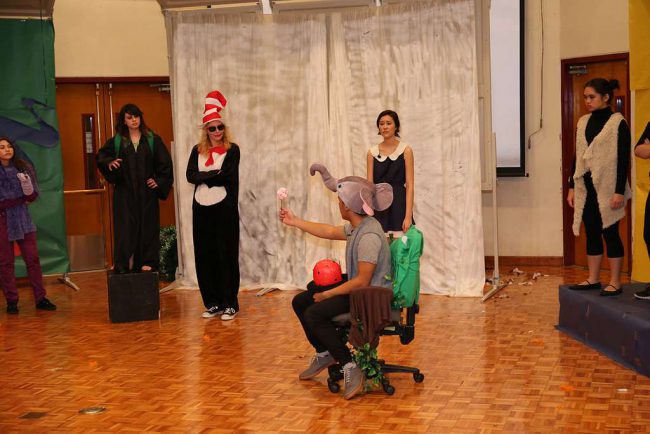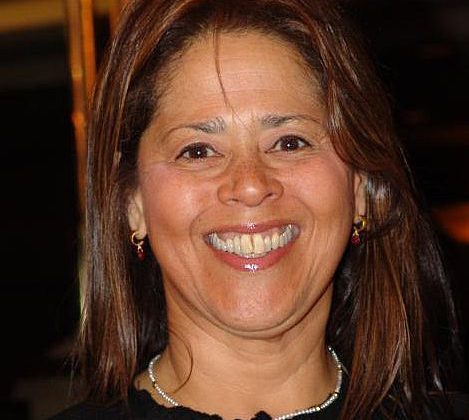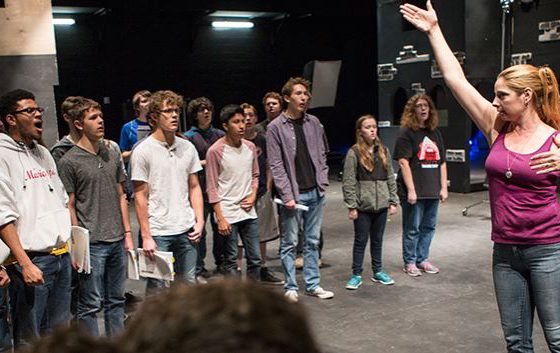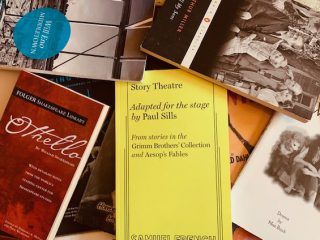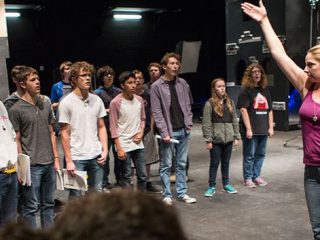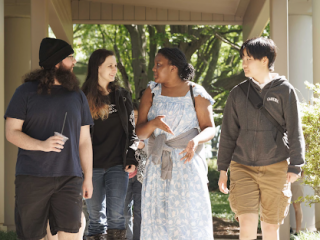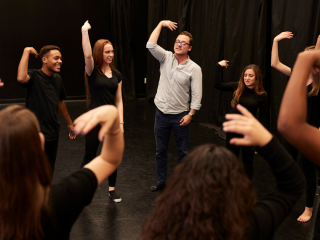So, you want to start a school theatre program. Great! Now what? That answer will depend on many things. Here’s a breakdown of what you’ll need to know.
Meet Your Community
A successful school theatre program relies on a lot of support from the community, so your best place to start is the community itself. Go to PTA and school board meetings. Meet with school administrators. Talk about how an arts program will benefit the school. An informal parent mixer can be a great way to get to know people and initiate conversations. Encourage people to sign up to volunteer and start building a list of contacts. More often than not, people want to help! Creating concrete ways for people to get involved and specifying your needs will go a long way in building a network of helpers.
You should also have conversations about the needs of the community, how a school theatre program can help serve those needs, and what resources already exist that you can tap into for funding, supplies, and manpower. Look for people who can lead classes – you never know what kind of hidden talents people have. I’ve brought in people who did workshops on everything from puppetry to songwriting. And don’t forget to look in your backyard: find out what help other teachers can offer, be it costume supplies, props, or even rehearsal snacks.

Have A Plan
Now that you have a picture of where the program will be, it’s time to think about what the program will be. What should you be thinking about at this stage? I would start with the program’s basic structure. Will it be a class during the regular school day, an after-school program, or some combination of both? What will the curriculum be? This is where knowing your student population and their previous experience levels will help. You can look at your state’s fine arts standards for guidance, or the National Core Arts Standards.
If you plan to incorporate a public performance, consider what that will look like. You have two basic options: a student-written production or a published show from one of the major licensing companies like MTI or Concord. A student-written production will be way more budget-friendly. If your school has a dedicated performance space, look into the logistics of scheduling and tech capabilities. If you don’t, reach out to the community for leads on places that might lend you their space in exchange for advertising or some other incentive.
Show Me the Money
You can start a good program for little or no money, but if you plan to grow or put on productions, you’ll need some funding. Consider forming an arts committee on your PTA to help spearhead fundraising. But what will you need money for, how much, and where will it come from? Much of that will depend on the size and needs of your program. If you plan to produce shows, you’ll want to budget at least a few hundred dollars for supplies and around a thousand dollars for licensing rights and scripts if you perform a show from a publishing house. Larger productions and musicals will of course need more money. The more you can get donated and the more creative you can get, the more you’ll save. Theatre On A Shoestring is a great resource with all sorts of budget-friendly tech ideas.
Please, Sir, May I Have Some More?
No, we’re not practicing for our production of Oliver. But the money you’ll need has to come from somewhere, so it’s time to come up with a good fundraising pitch. Keep it short and simple: what’s your program all about and what specifically does financial support go towards? Reach out to potential community partners like small businesses with a personalized message (avoid generic mass emails, they’re a lot easier for people to ignore). You should also look into potential grants. State arts councils, community foundations, and local non-profits are good places to start.
Start Small
It’s tempting to want to do a lot at once. After all, the sky’s the limit! While that may be true, a program takes time to build, so set yourself up for success by starting small and staying realistic. Work with what you have and slowly grow the number of students and your supplies. This also means meeting your students where they are. You may dream of a blockbuster production of Newsies, but if you have five students with no dance experience and no budget, it isn’t going to happen…yet! But there are plenty of things you can do, like improv shows, student-written work, or small ensemble shows. Think of everything you do as an investment in the future of your program. Ask yourself: what do we have to work with right now? What can we accomplish that’s realistic and beneficial to the students and community?
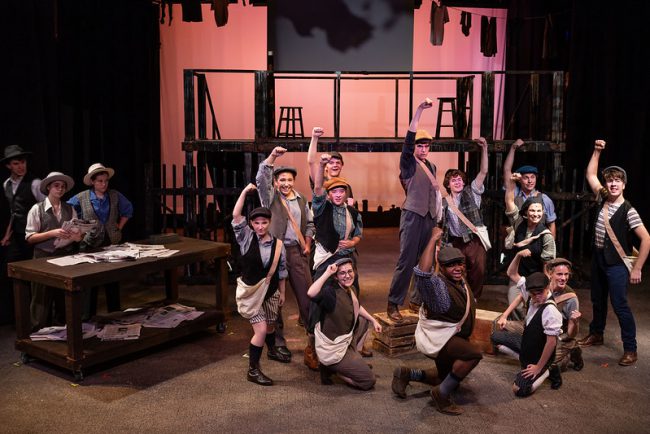
[Photo by John D. via Flickr.com]
Build A Culture
Above all, make it fun! That sounds obvious, but it’s easy to forget. Make sure everyone knows that your program is a place of joy and that there’s a place for everyone. Creating traditions helps with this. It can be as simple as a post-rehearsal circle where everyone shouts out something they’re especially happy about from that rehearsal. Don’t forget to harness the power of social media-create a presence and share what you’re doing. People are much more inclined to get involved when they see first-hand how their support pays off.
Starting a theatre program is a worthwhile endeavor. But remember: successful theatre programs are not a one-person show. Don’t try to do it all yourself! You may be the leader, but that doesn’t mean you can’t delegate. One of the biggest mistakes I made when I started was trying to do it all. Spoiler alert: that doesn’t work. The good news is it doesn’t take much to start a program that can benefit students in all kinds of ways. Check out the National PTA’s Arts Ed Handbook and the Advocacy Toolkit from Arts Are Education for more advice and resources on getting started.

